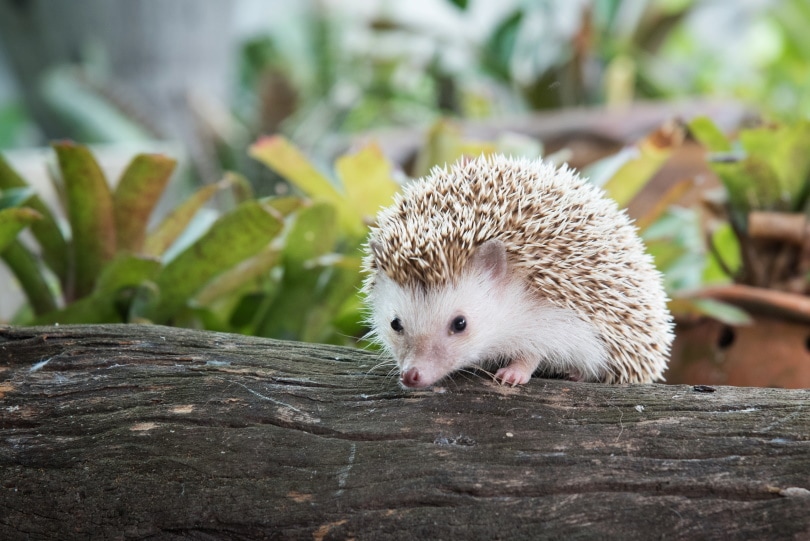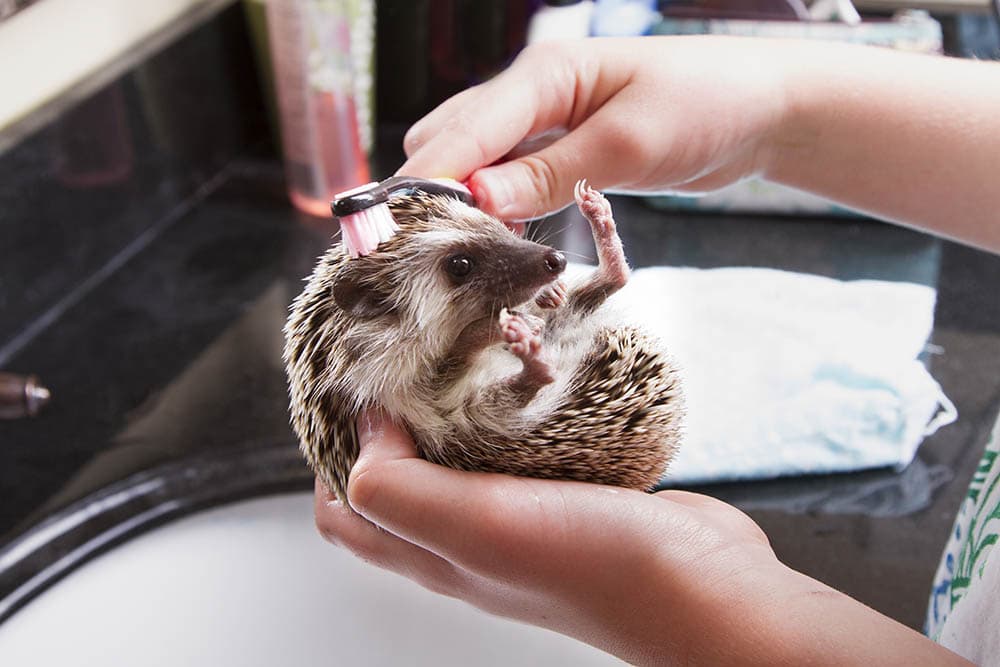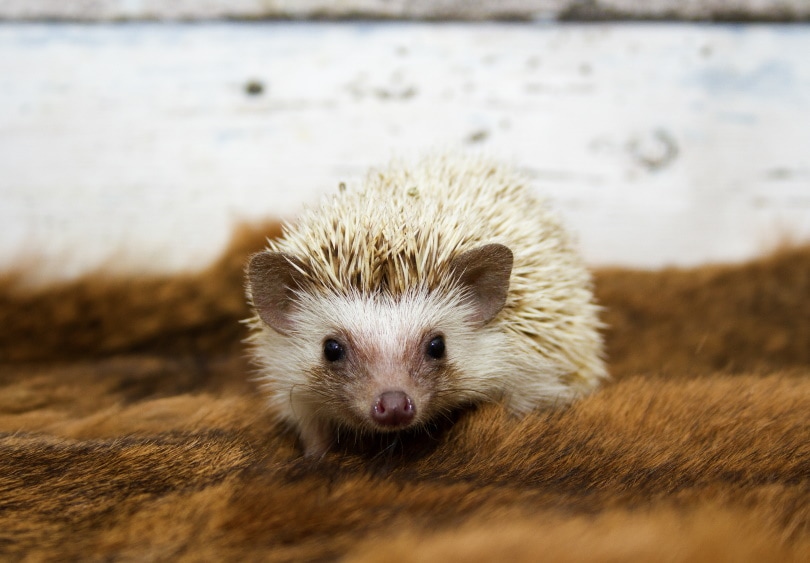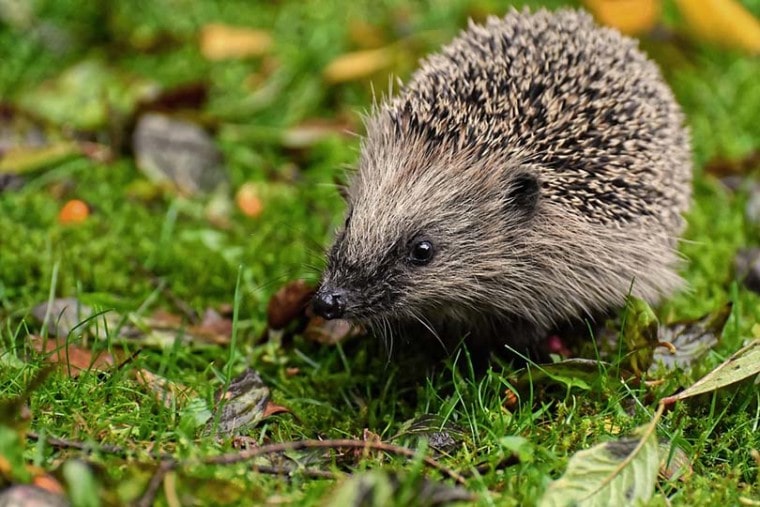
Hedgehogs are weird and wonderful creatures, and despite their prickly appearance, they actually make great pets. However, while many people keep these animals in their homes, few people seem to know much about them.
That’s unfair to these sweet little critters, so we decided that it’s high time that they had their moment in the sun. Here, we assembled 35 different weird and wacky facts about everyone’s favorite spiny creature.
The 35 Hedgehog Facts
The 10 Facts About the Hedgehog’s Background
1. Contrary to popular belief, hedgehogs are not rodents.
This myth likely started because they’re so often confused for porcupines, which are rodents. However, hedgehogs and porcupines aren’t related at all, as hedgehogs are actually members of the mammal order Eulipotyphla. This makes them closer to shrews, which also look like rodents.
2. They’re called “hedgehogs” because they tend to build their nests in bushes or other areas of dense vegetation—like hedges.
They also make adorable little grunting sounds like pigs, so hedge + hog = hedgehog!
3. They are only native to four continents, as there aren’t any species that are native to Australia or North and South America.
There used to be a species native to North America, but it’s extinct. However, hedgehogs are so popular as pets that they can be found almost anywhere nowadays—just keep them secure in their habitats, please.
4. There are at least 15 different species of hedgehog in the world.
Three are found in Eurasia, four are native to Africa, two are located on the steppes, and there are six different desert hedgehogs. When it comes to the typical species that are kept as pets, we’re usually talking about European or African pygmy hedgehogs.
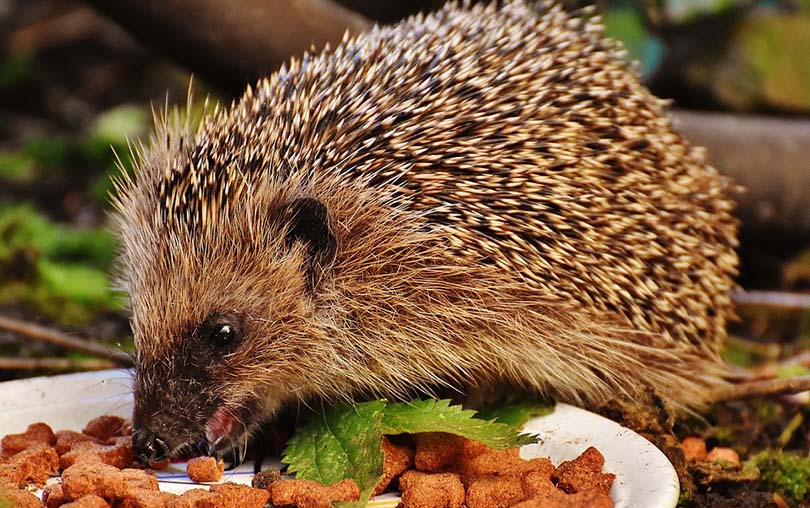
5. Hedgehogs haven’t always been kept as pets; in fact, they used to be kept as snack packs.
People would hunt the hedgehog, then roll their bodies in clay and bake them in a fire. After cooking them, they’d peel the clay off, taking the spines and hair with it. We recommend just keeping one as a pet, though.
6. It was long believed that hedgehogs were dangerous pests.
The thinking was that they would steal milk from cows in the middle of the night. Why people thought this is a mystery, but it’s quite a ridiculous thing to think, beyond the question of just how, exactly, a hedgehog would be able to reach and attach themselves to an udder.
7. In certain cultures, especially ones in the Middle East, hedgehog meat is believed to have medicinal properties.
It’s thought that eating hedgehogs can cure everything from tuberculosis to impotence, and in Morocco, some people think that inhaling smoke off burnt hedgehog skin can reduce fevers and cure urinary tract infections.
8. The ancient Persians had a completely different view of hedgehogs.
They considered them sacred to the god Ahura Mazda, on account of their penchant for eating crop-destroying pests.
9. Owning a hedgehog is illegal in many places.
This includes Hawaii, Pennsylvania, California, and Georgia, although keeping one as a pet is largely okay throughout Europe. In some places, you can own one, but only if you obtain a special permit.
10. One of the great things about hedgehog ownership is that being allergic to them is practically unheard of.
Some people get a little pinprick-looking rash on their skin after handling a hedgehog and mistakenly think that it’s a rash, but it’s more likely due to handling an animal covered in pointy spines. However, it is possible to be allergic to hedgehog food or their bedding, so if you’ve started sneezing more since you brought a hedgehog home, that should be where you focus your attention.
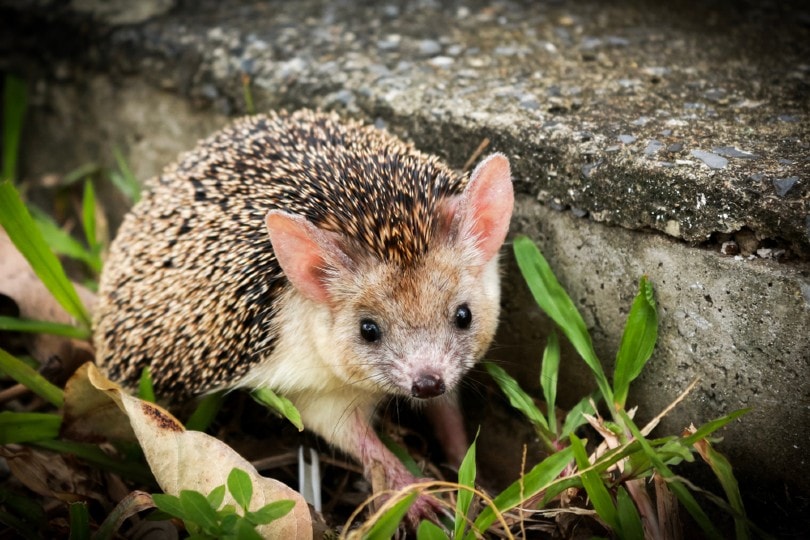
The 15 Facts About Hedgehog Health
11. If one breed should wear glasses, it should be hedgehogs.
Hedgehogs have incredibly poor eyesight (they’re somewhat closely related to moles). As a result, they rely primarily on their hearing and smell to interact with the world.
12. Most hedgehogs have special proteins in their blood that can neutralize snake venom.
This often renders them largely immune to snakebites. This enables them to turn the tables on the snake and hunt them instead of the other way around. However, they’re not completely immune to it, and if the venom is potent enough or directed at the right part of their body (like the face), they can still be injured or killed.
13. Hedgehogs have a gene called “Sonic Hedgehog”.
It’s responsible for separating the right side of the brain from the left, as well as ensuring that they have two separate eyes. Do you know who else has this gene? You do (and all humans, actually)!
14. Hedgehogs are among the few mammals that hibernate.
Not all hedgehogs do so, but the ones that do will sleep from around October through April. They’re not completely dormant, as most hibernating hedgehogs will move nests at least once during the hibernation period.
15. They can inflate.
The animals are prone to something called “balloon syndrome”, in which gas gets trapped underneath their skin, causing them to inflate (sometimes getting as big as a beach ball). No one’s sure why this happens, although injury is suspected, and the only treatment is creating an incision in the skin to release the trapped gas.
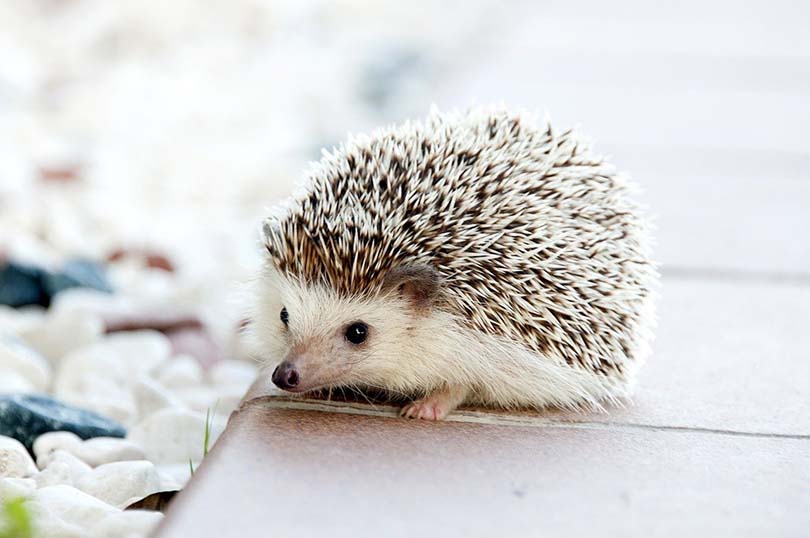
16. Hedgehogs don’t have many predators, but there are a few animals that will make a snack out of them.
Their bones have been found in owl pellets, but badgers are their biggest predator. Badgers also compete with hedgehogs for food, putting even more pressure on them.
17. Badgers are not their biggest threat.
Other than badgers, the biggest threats to a wild hedgehog’s life are cars. It’s estimated that as many as 335,000 hedgehogs are killed by cars every year in the U.K. alone, so try to swerve if you see one out there.
18. Hedgehogs only get one set of teeth.
44 in all in their lifetime, and they’ll be fully grown in by the time that they’re 3 weeks old. As a result, it’s extremely important to take good care of your hedgehog’s teeth if you keep one as a pet.
19. Hedgehogs can swim.
Unlike Sonic the Hedgehog, actual hedgehogs are actually quite competent swimmers. In the wild, they’ll regularly swim as far as 2 km in search of food, although they’re typically more inclined to just lounge in the water.
20. They “quill” for a variety of reasons.
While a hedgehog’s spines can fall out with regularity (in a process called “quilling”), you should take notice of when it happens. If your hedgehog is sick or stressed, the spines can fall out as well, so you might need to take them to the vet if you see it happening.

21. Hedgehogs are prone to parasites.
Both inside and outside their bodies. They can get worms, fleas, ticks, mites, and all sorts of other things, so check your pet for unwanted guests regularly. Interestingly enough, long-eared species are more likely to suffer from parasites, especially ear mites.
22. Hedgehogs are susceptible to cancer.
Once hedgehogs reach about 3 years of age, cancer becomes extremely common in hedgehogs, usually affecting the stomach, mouth, or intestinal tract. Look for signs like weight loss, lethargy, and spines falling out.
23. They’re also susceptible to a variety of respiratory diseases.
Including, pneumonia. If your hedgehog is sneezing or showing difficulty breathing, take them to the vet. They can also acquire and transmit kennel cough, so keep your new hedgehog away from your dog until you’re sure they’re completely healthy.
24. They should never drink milk.
Despite what a medieval farmer might have told you, hedgehogs won’t steal a cow’s milk for one simple reason: they’re lactose intolerant. Okay, maybe this is not a well-known tale, but the important thing is not to serve your pet hedgehog any milk.
25. Hedgehogs are prone to obesity, and that’s not good for their life expectancy.
In addition to practicing strict portion control, you should ensure that they have plenty of opportunities for exercise. That means filling their cage with ramps, tunnels, and other furniture, as well as balls and chew toys.

The 10 Facts About Hedgehog Behavior
26. Hedgehogs are primarily nocturnal.
they’re not a good choice of pet if you’re a light sleeper or want a pet that you can interact with during the day. They’ll likely spend most of the daytime hiding in their cage, begging you to keep it down.
27. Hedgehogs anoint.
If you’ve ever seen your hedgehog lick and bite something, then froth at the mouth and rub that froth all over their spines, you’ve noticed them doing something called “anointing”. No one knows why they do this, but the prevailing theory is it either camouflages their scent or adds a potential poison to their spines.
28. All hedgehog species use their spines as a form of defense.
They do this by rolling into a ball to put those spines front and center while protecting their face and hands. However, not all species have the same number of spines; desert species tend to have fewer spines, so they’re more likely to run away (or even attack!) than roll into a ball when threatened.
29. Their spines are attached to their bodies.
Unlike a porcupine’s quills, a hedgehog’s spines won’t detach easily from their body. Instead, they use those spines to deter attacks from predators, making them feel like a hedgehog dinner isn’t worth the trouble (and pain) involved.
30. Hedgehogs are omnivores.
They primarily eat insects, but they’ll also snack on slugs, snakes, mice, and frogs, all of which can be harmful to crops and gardens.
31. In places where the hedgehog isn’t native, they’re considered an invasive species.
This is why it’s illegal to own them as pets in some places, as authorities are afraid that people will release them into the wild with potentially devastating results for local wildlife. This has already happened in New Zealand, where invasive hedgehogs have had a huge impact on native skink and bird populations, an issue exacerbated by the fact that these hedgehogs have no natural predators in the country.
32. Pay attention to the sounds that your hedgehog is making, as their vocalizations are one of their primary communication methods.
They’ll grunt when looking for food, chirp when hungry, chuff when wanting to attract a mate, and scream, hiss, or click to show aggression.
Related Read: Do Hedgehogs Purr? The Interesting Answer!
33. Many hedgehogs like to put toilet paper rolls over their heads and walk around, a behavior affectionately known as “tubing”.
If you want to encourage your hedgehog to perform this adorable behavior, make sure you cut the tube in half lengthwise before giving it to them, to reduce the risk of them becoming stuck.
34. Hedgehog litters usually include three or four newborns for larger species and five or six for smaller ones.
However, adult males will often kill newborn males, so be sure to remove dad from the habitat if mom has just given birth (and make sure you got a permit to breed them if you live in a place that requires such a thing).
35. These animals are typically solitary creatures, as they’ll leave their mother after 4 to 7 weeks of nurturing.
Once they’re on their own, they’ll largely stay that way, only joining up with other hedgehogs in order to mate. As a result, you shouldn’t keep more than one hedgehog in a tank at a time, especially if they’re of the same sex.
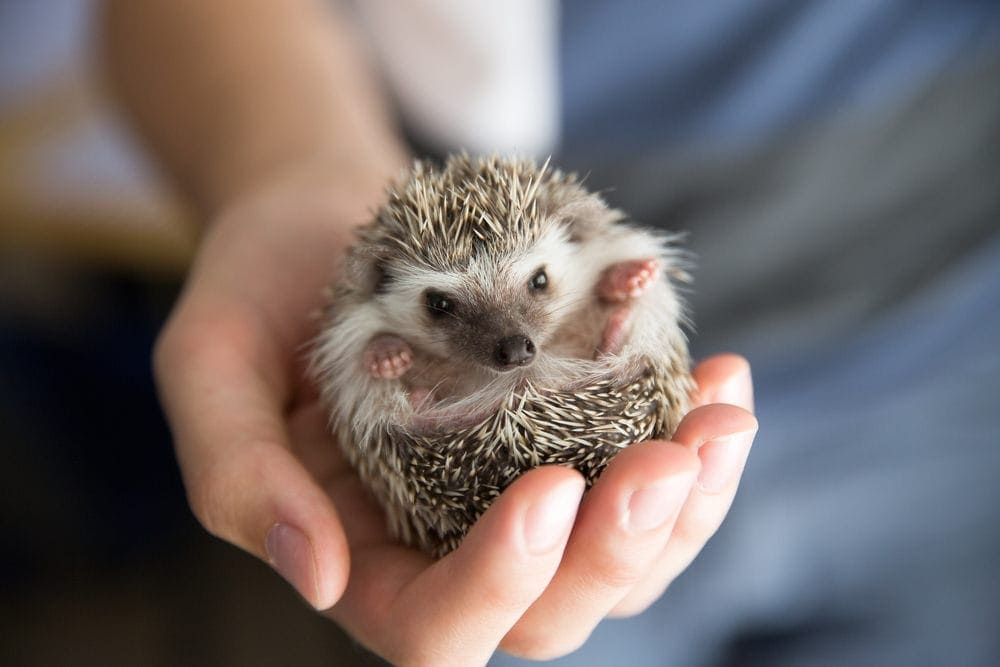
All Hail the Mighty Hedgehog
Hedgehogs may not get the respect that they deserve, but that’s largely due to ignorance. After all, how could you possibly fail to respect an animal that can stand up to vipers, eats troublesome bugs, and has been seen as sacred at certain times of their existence?
Then again, we suppose that it’s hard to respect a creature that’s prone to getting toilet paper tubes stuck on their head.
Related Reads:
- 7 Hedgehog Myths & Misconceptions: It’s Time To Stop Believing These!
- How to Trim Hedgehog Nails (5 Simple Steps)
- Daurian Hedgehog
Featured Image Credit: Alexas_Fotos, Pixabay

